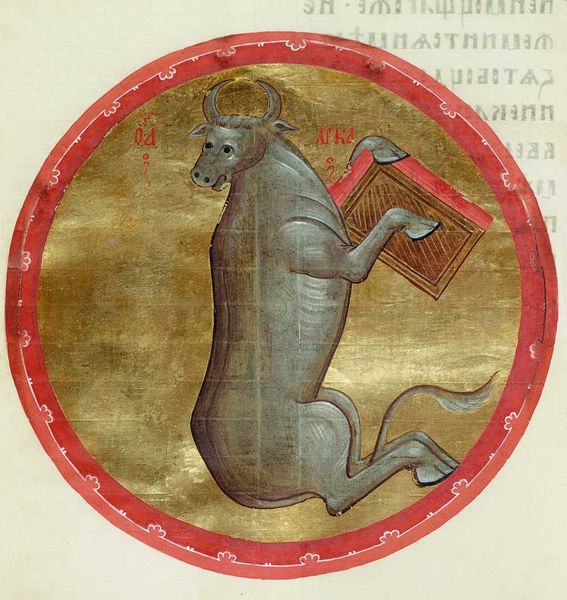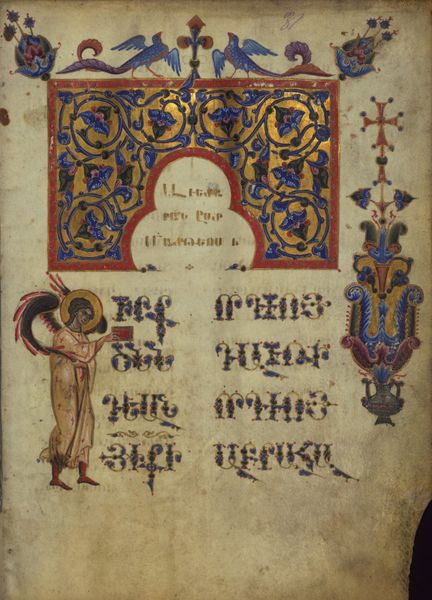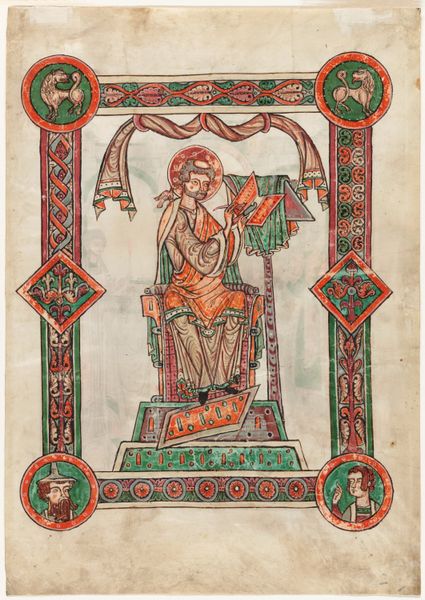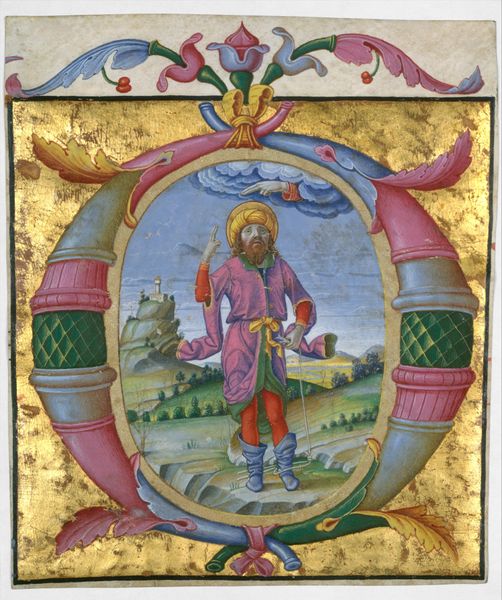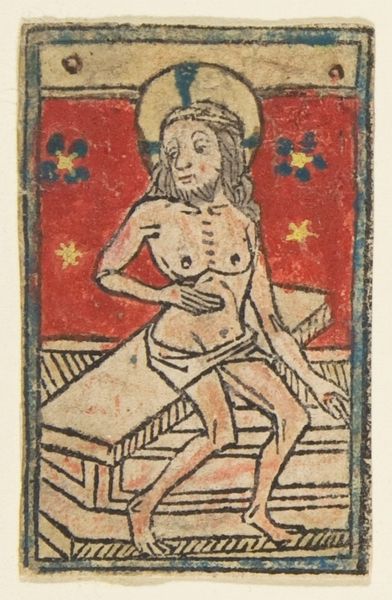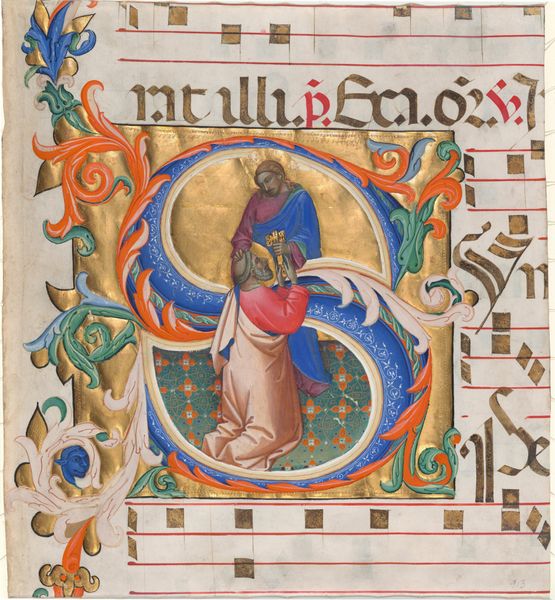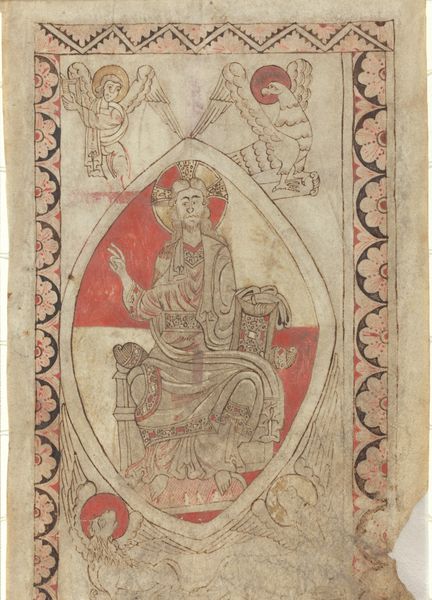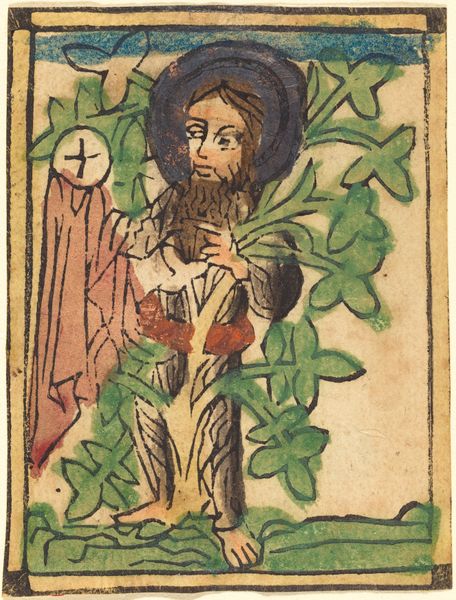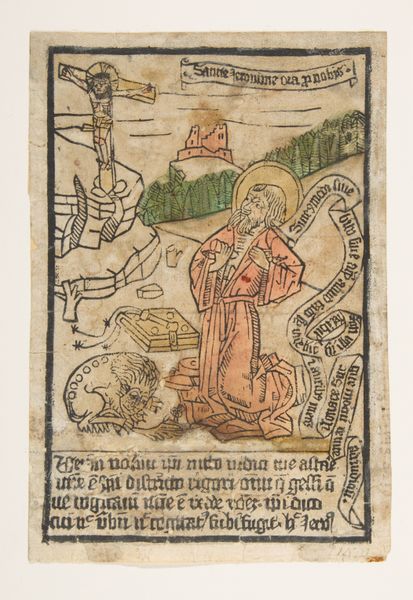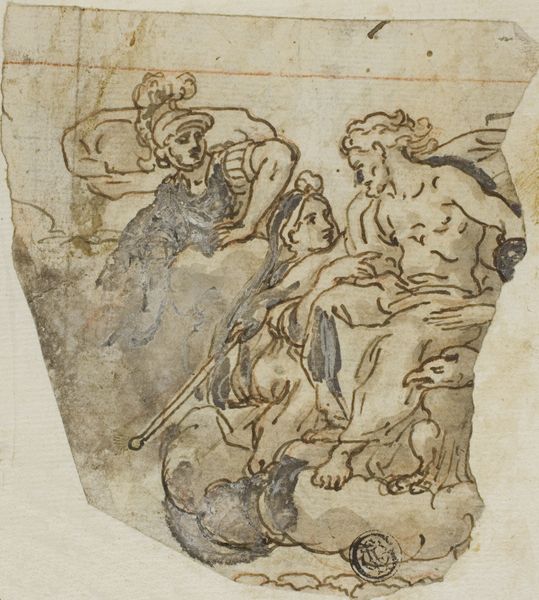
tempera, painting
#
byzantine-art
#
medieval
#
tempera
#
painting
#
figuration
#
oil painting
#
watercolour illustration
#
watercolor
#
christ
Copyright: Public domain
Curator: What a curious expression. It’s both regal and… apprehensive? Editor: That apprehension is spot on. Let's explore this image more closely. What we are looking at is "The Lion of St. Marc" painted in tempera, around 1400, by Andrei Rublev. The artwork resides in the Russian State Library. It’s a wonderful example of medieval iconography. Curator: Iconography indeed! Look at how the traditional symbolism plays out here. The lion, traditionally a symbol of royalty and strength, is directly tied to Saint Mark, one of the four evangelists. Its appearance speaks volumes about cultural values and how religious figures were visually understood during this period. Editor: But also how those figures and symbols are employed to empower social hierarchies. The depiction of St. Mark as a lion places knowledge—the book—within a symbolic framework that upholds power dynamics. Curator: True. The golden background enhances its divine, timeless quality. Gold was expensive, of course, but it was used to illustrate ethereal divinity. Editor: I see that shimmering gold as something far more problematic. The Church wielded considerable economic and political power during the medieval period and the overabundance of gold reflects a complicity in this authority. It's vital to understand art and artists were not neutral; their creative decisions directly reflect society's priorities. Curator: So much of that period’s art has been seen, interpreted, and then misinterpreted. But I can't help thinking how consistent visual language provides clues about cultural memory, even in cases where political intent can be less easy to pin down. The blue outlining, those colors repeated over generations and each variation has significance. Editor: Absolutely. When approaching these complex art objects we need to question the established interpretations to understand power. I mean, who decides which values get upheld and preserved and what historical realities are conveniently erased through it all. Curator: True, our dialogues only help reveal those complexities! Editor: Precisely, it is about encouraging a nuanced understanding of the art that shapes our perception.
Comments
No comments
Be the first to comment and join the conversation on the ultimate creative platform.
